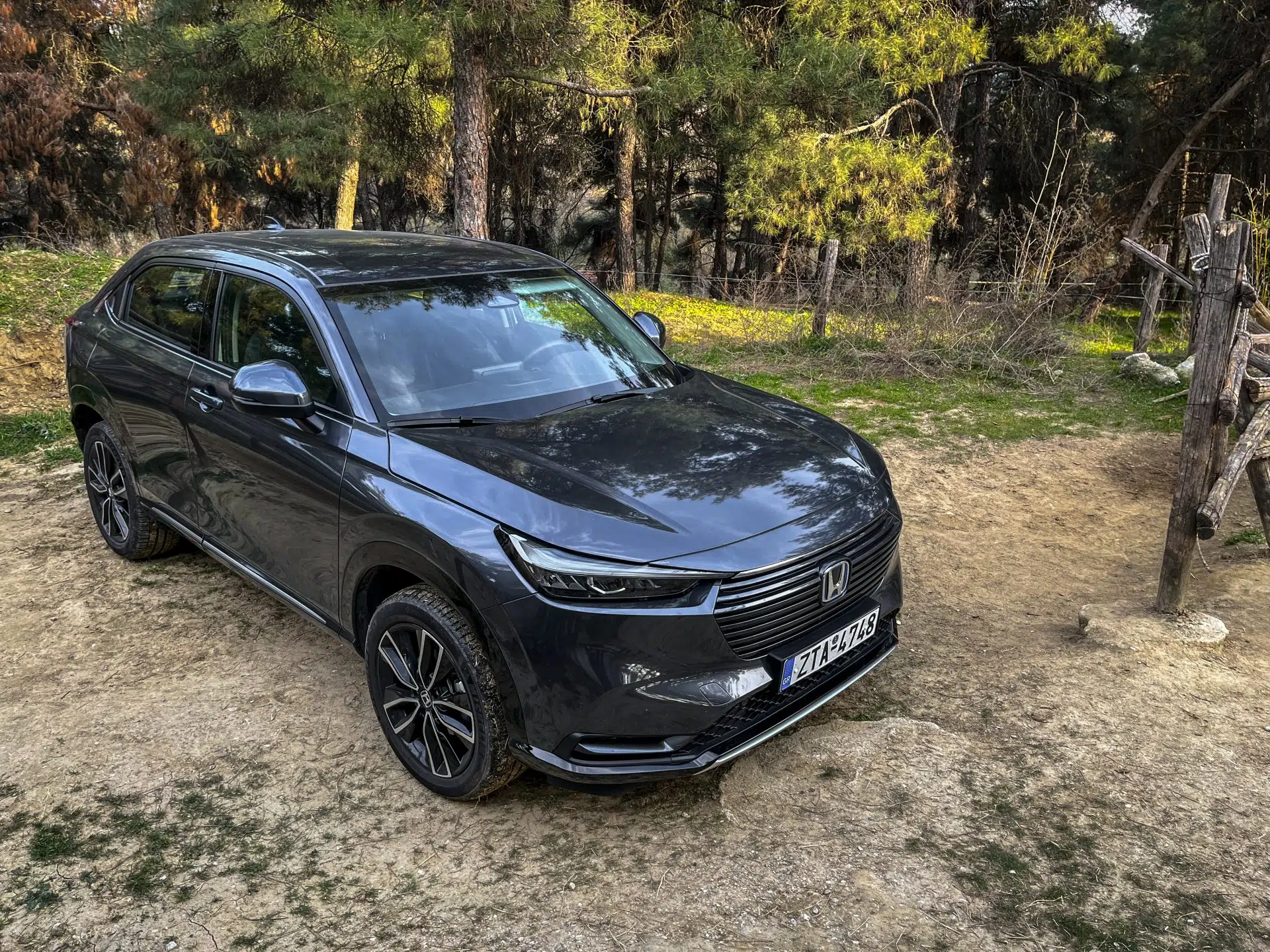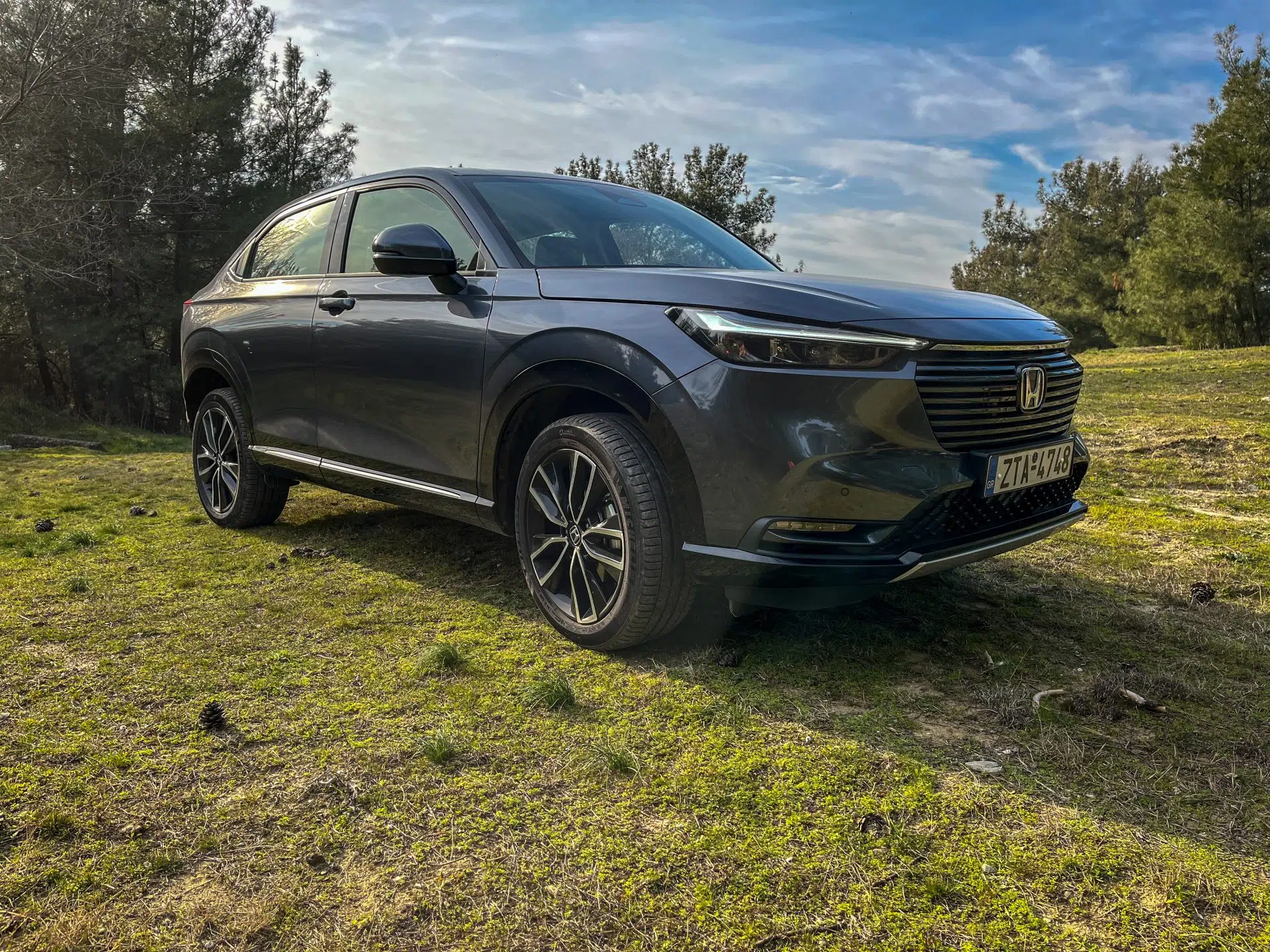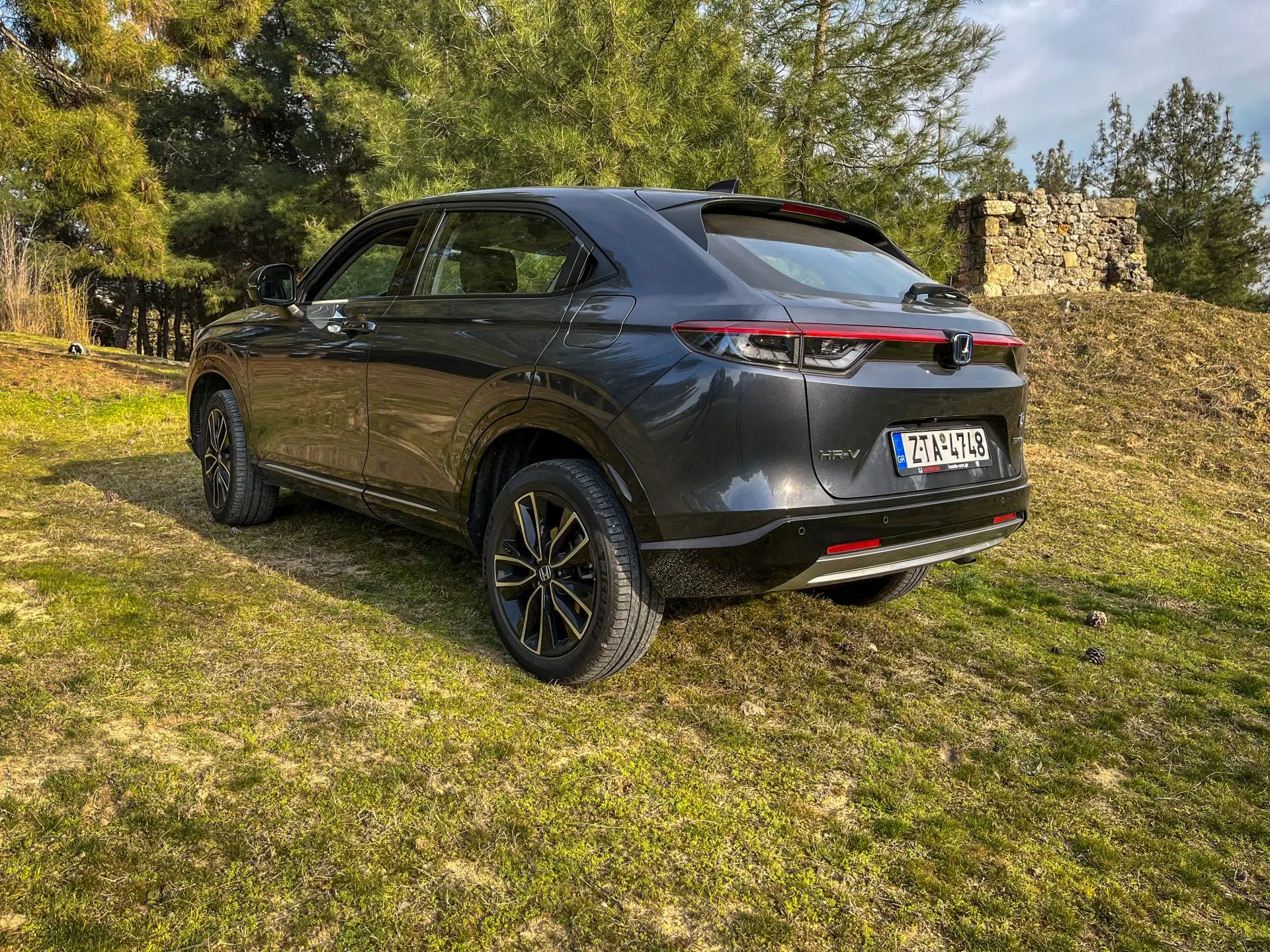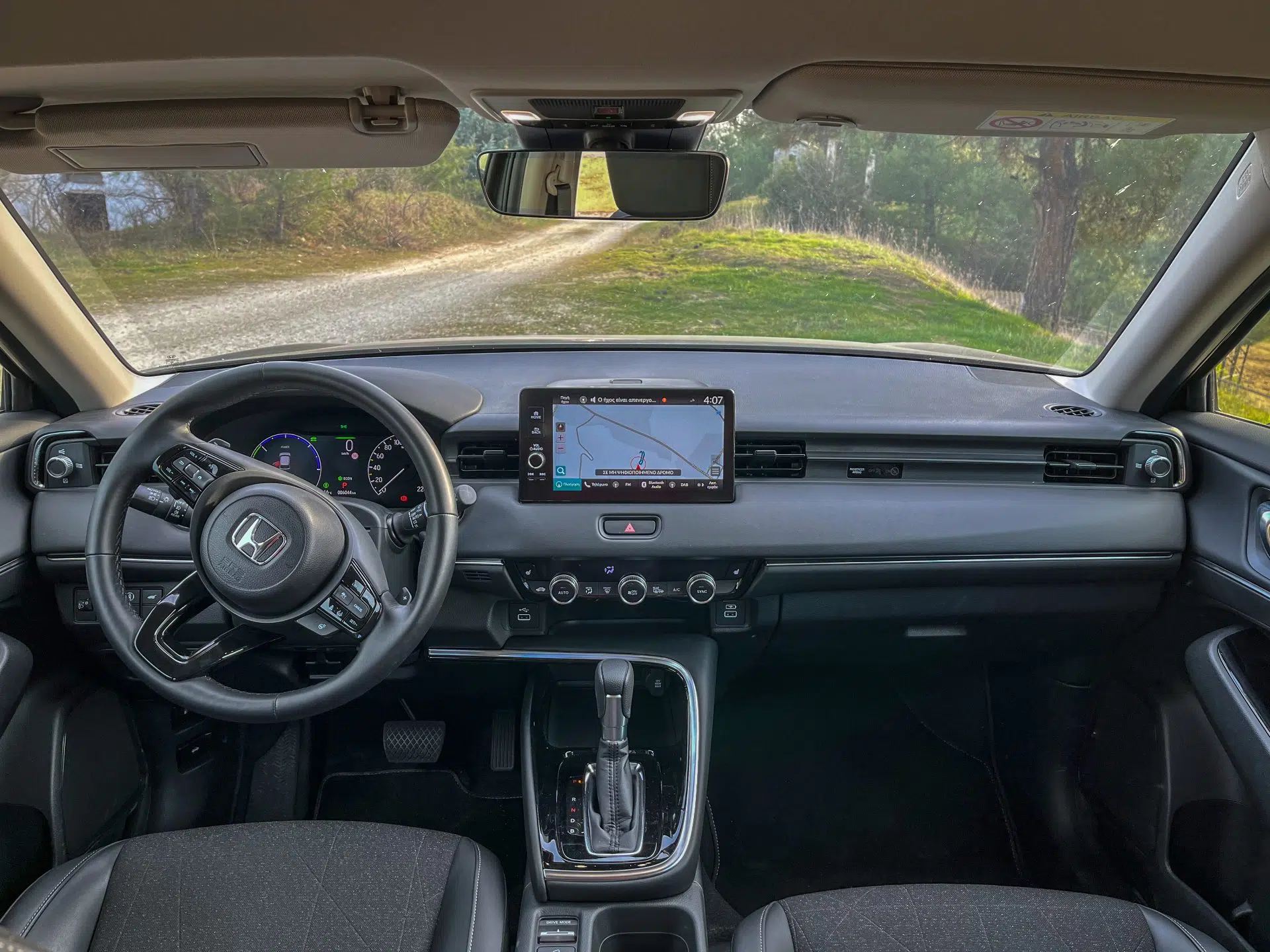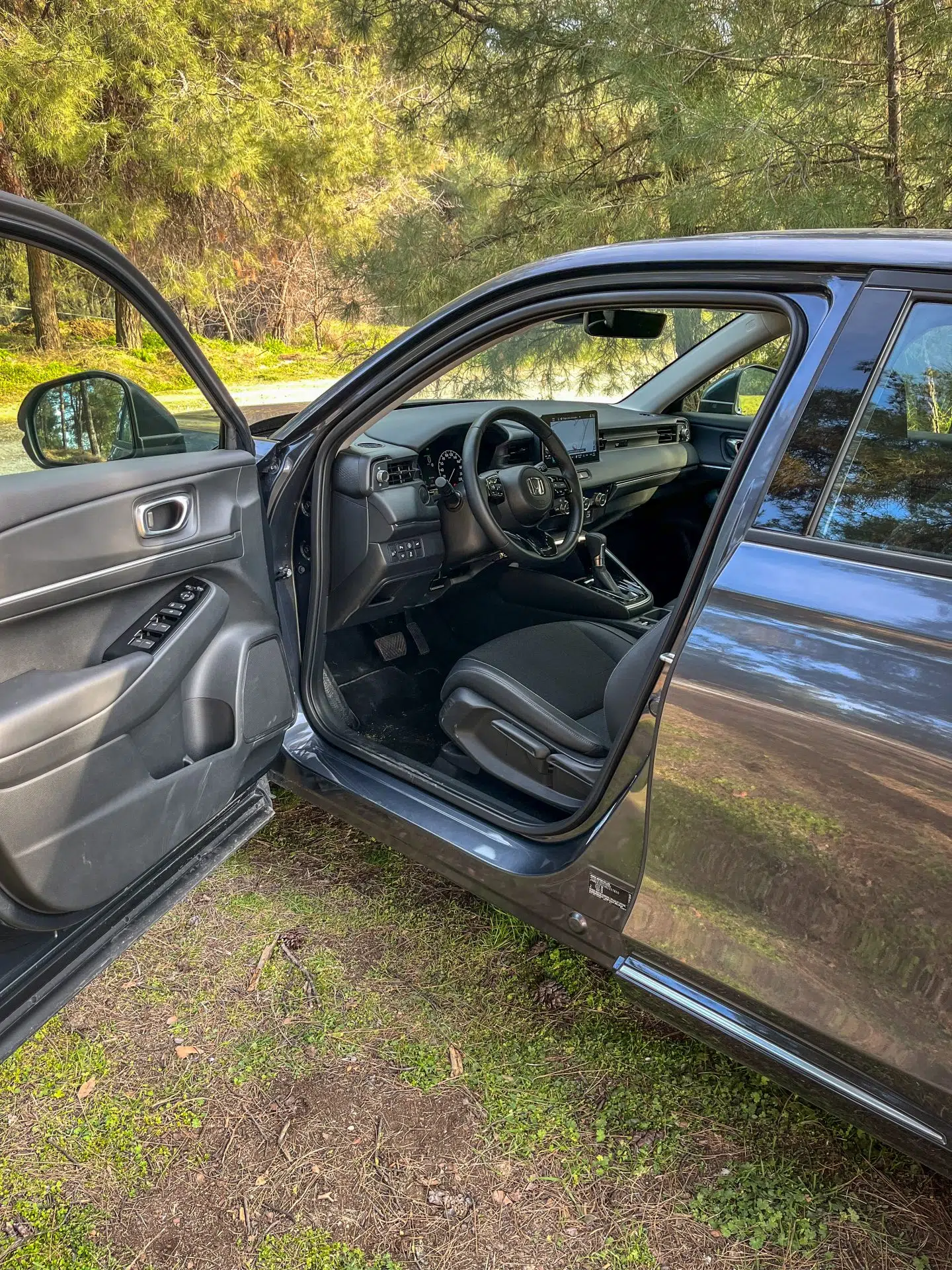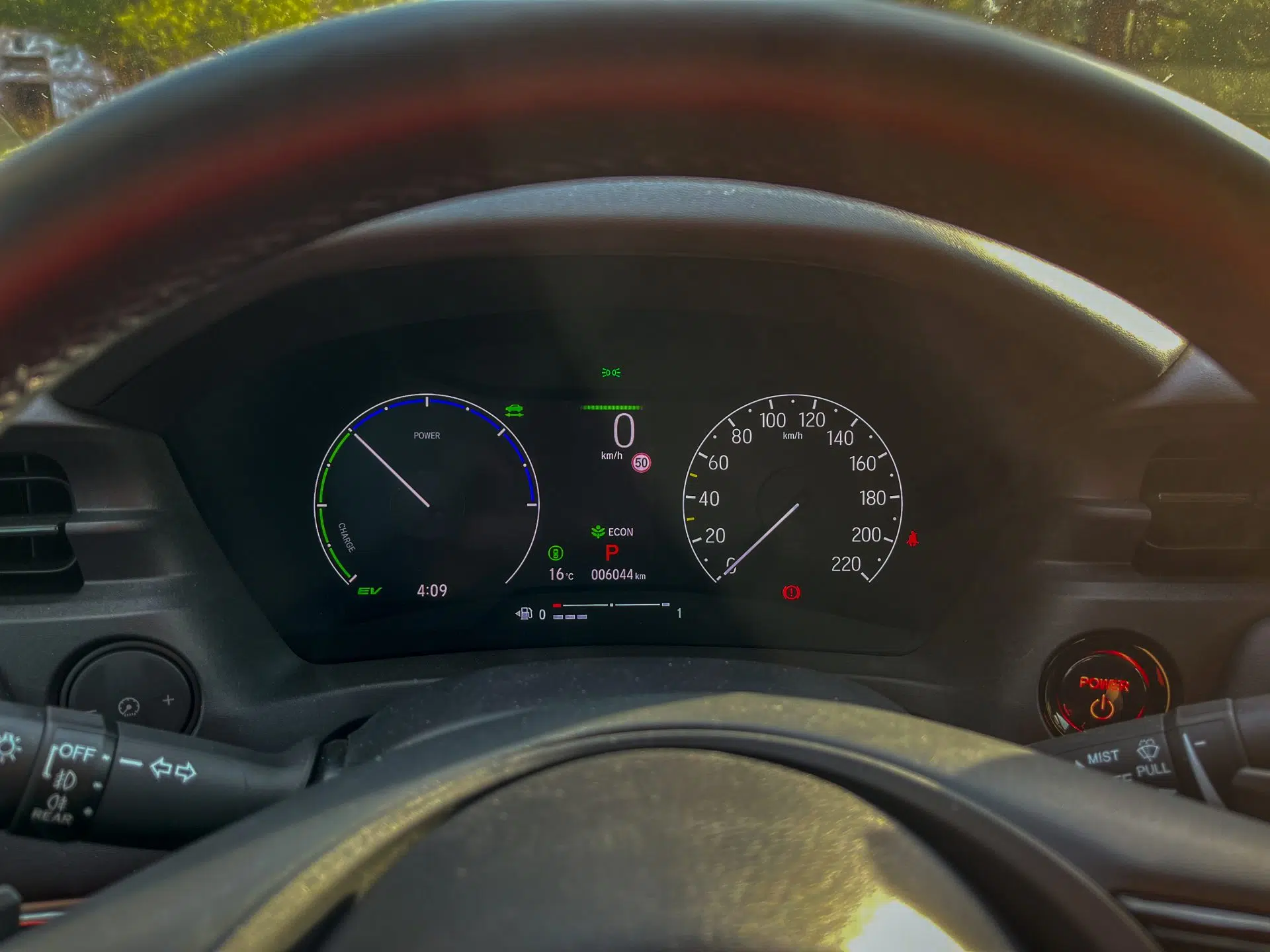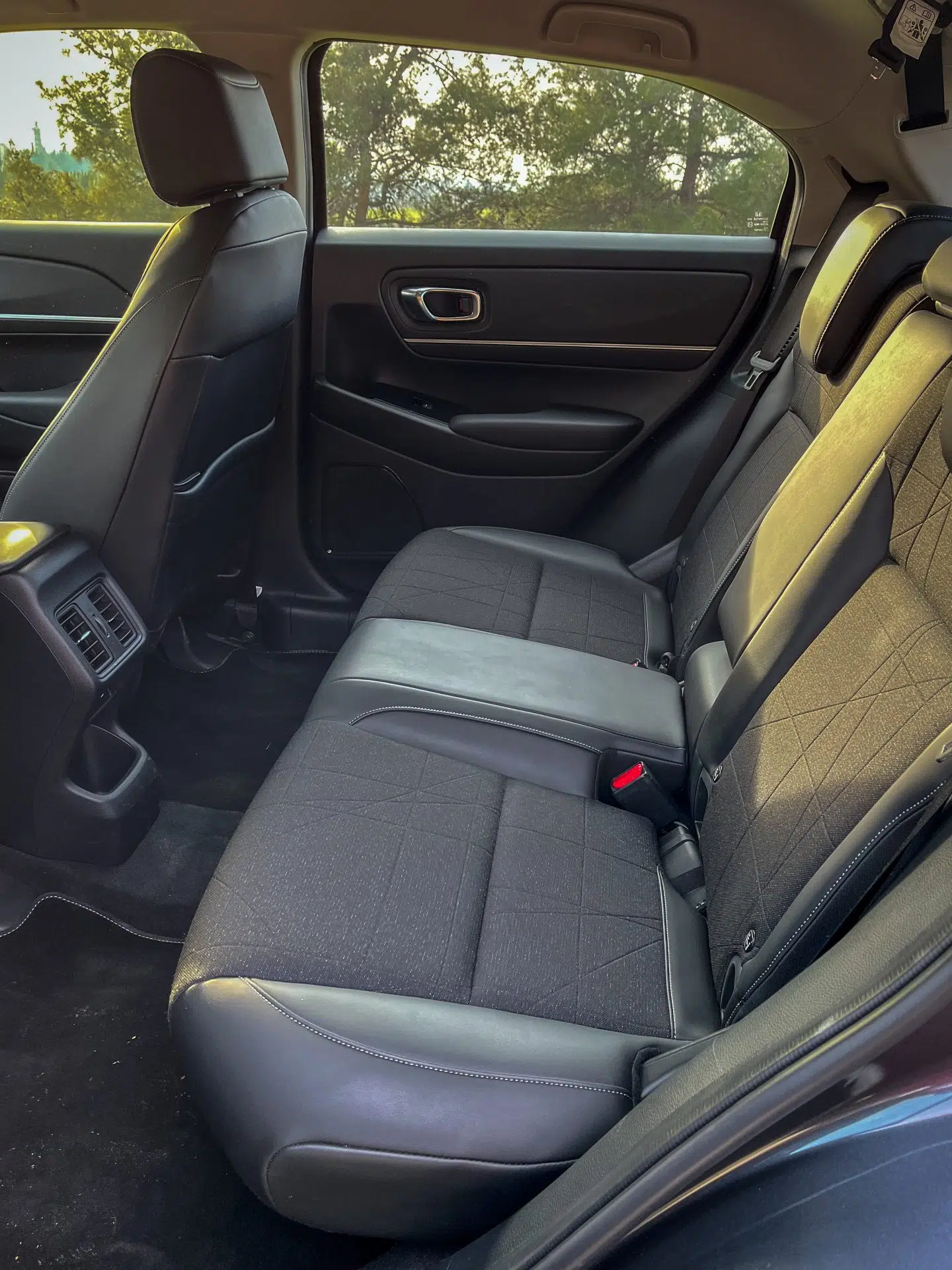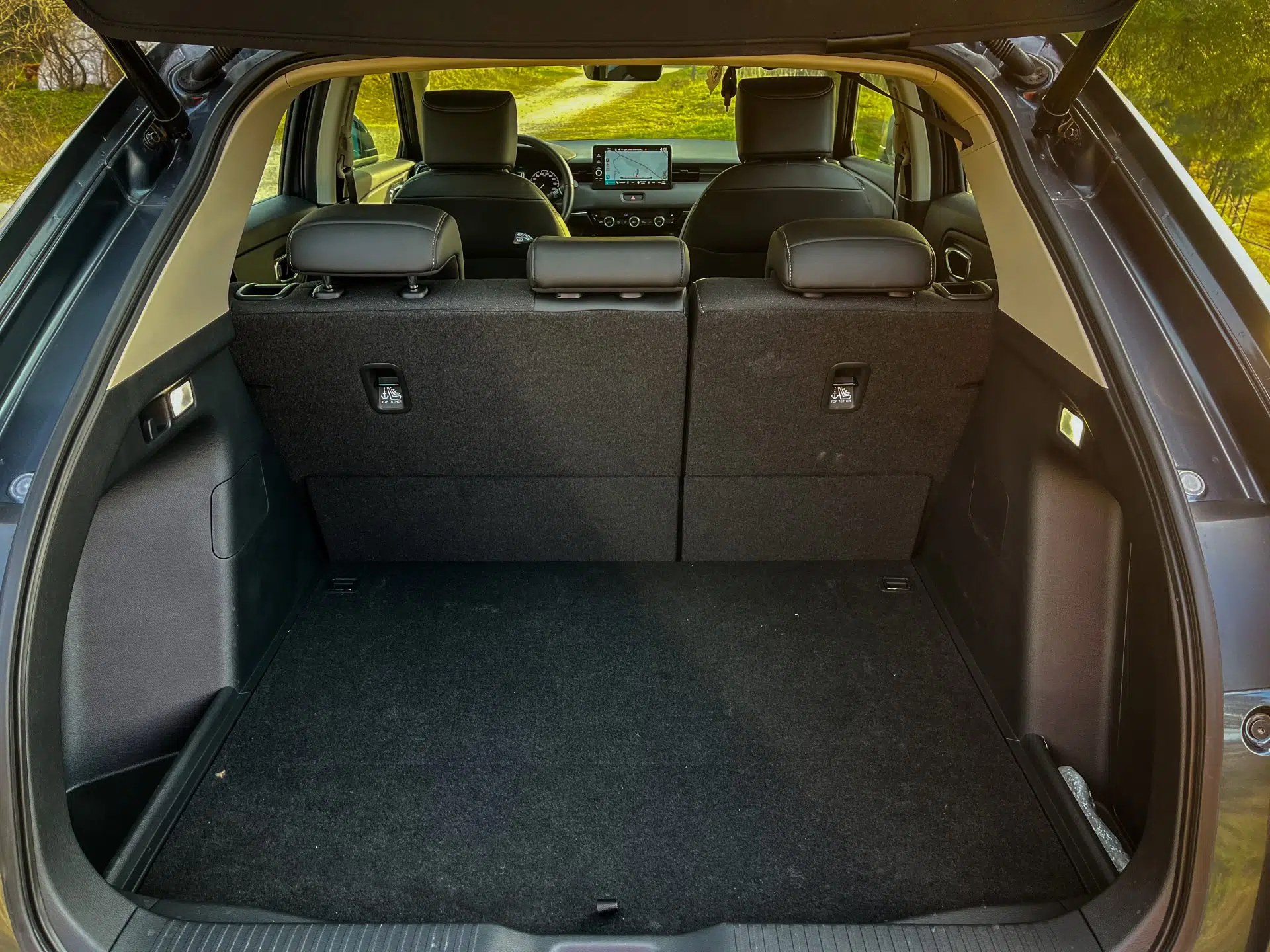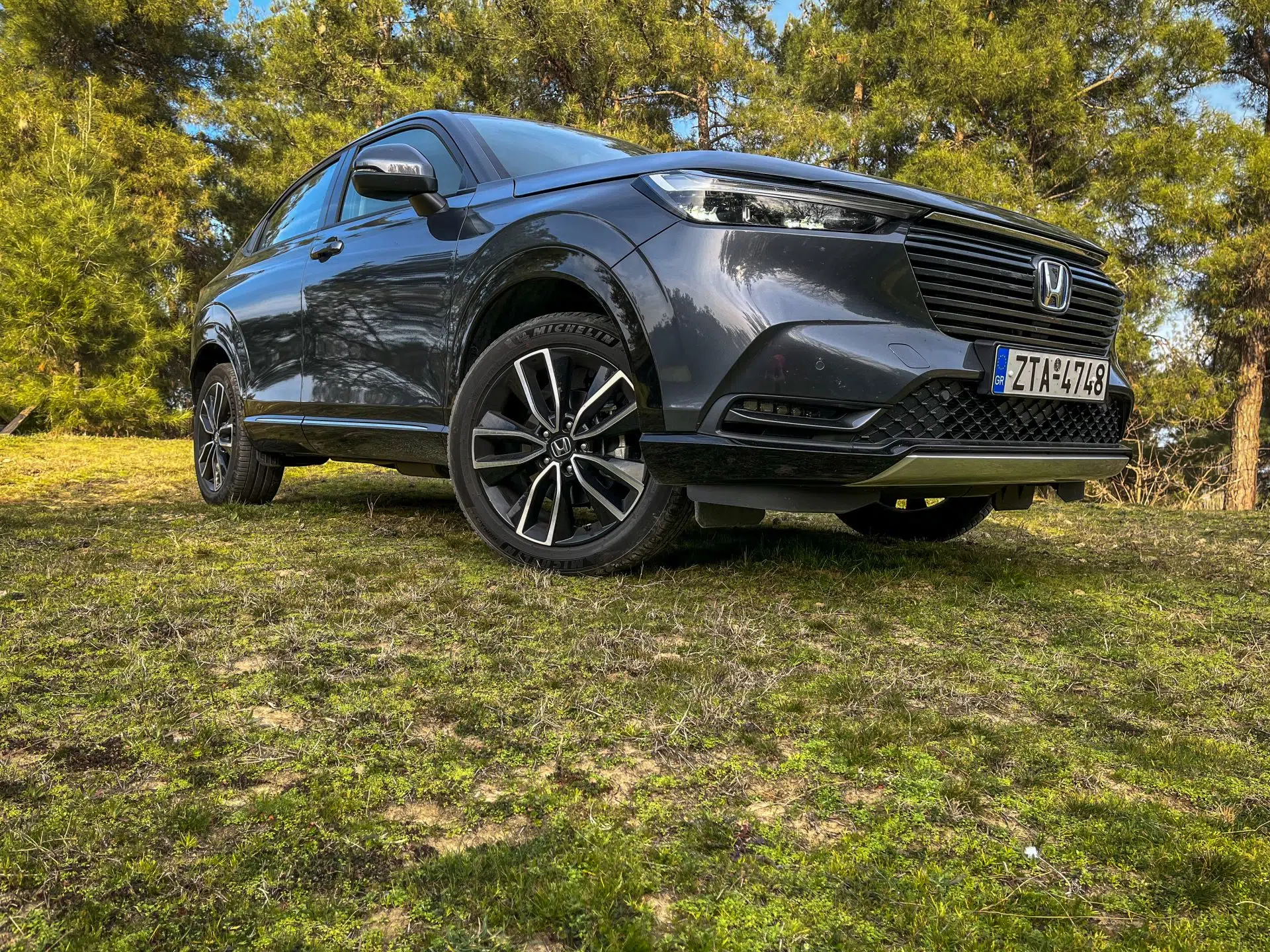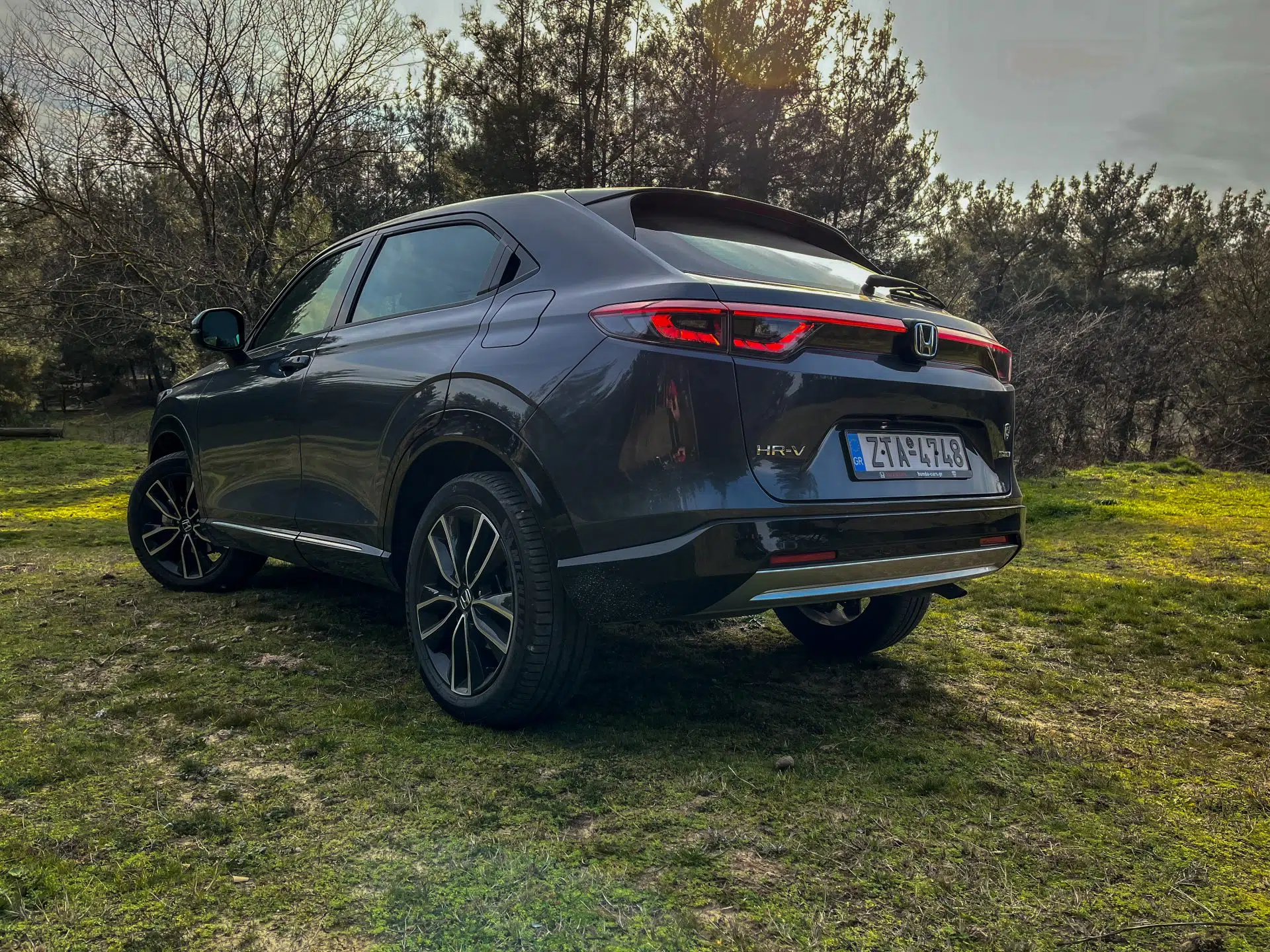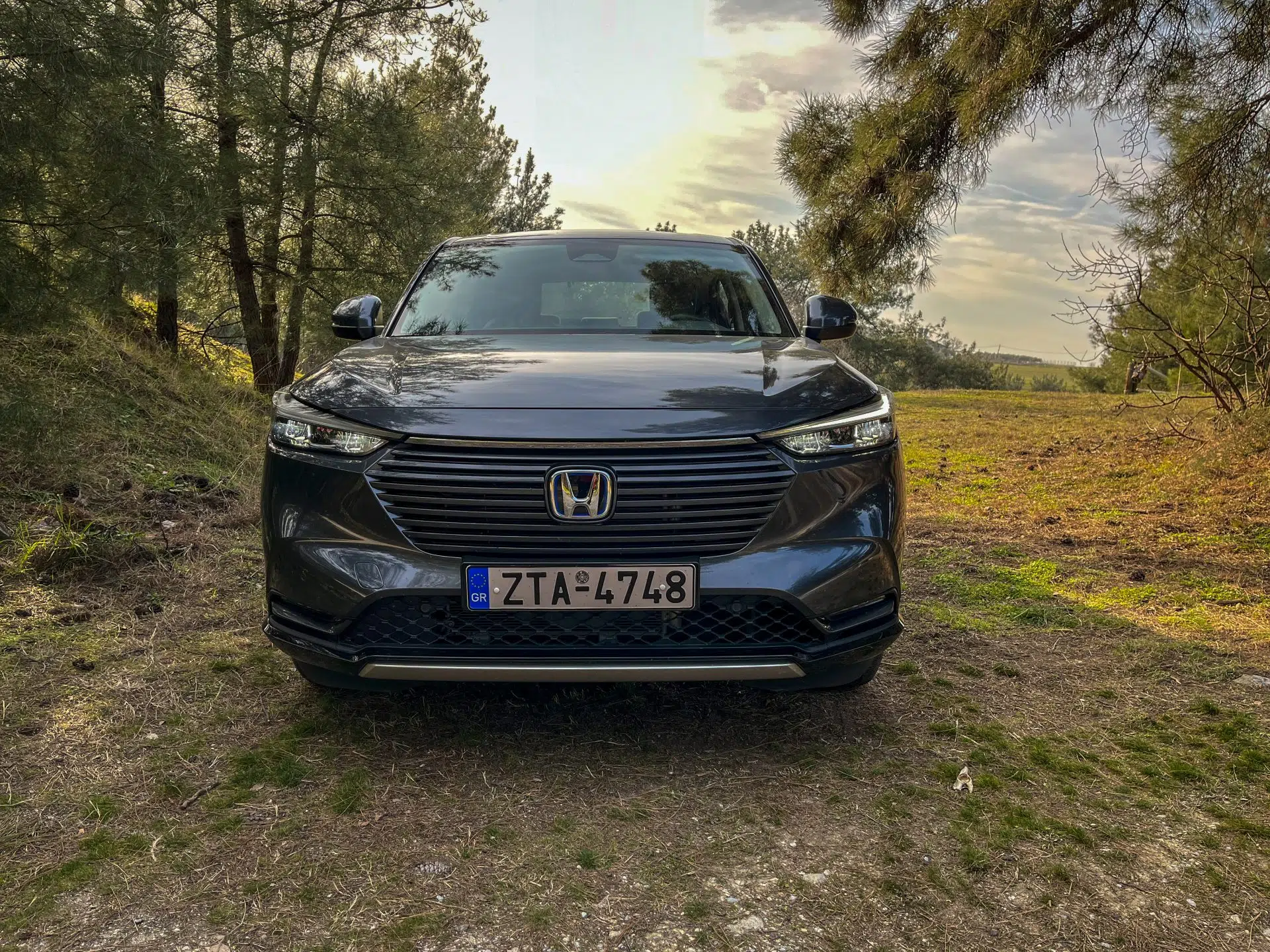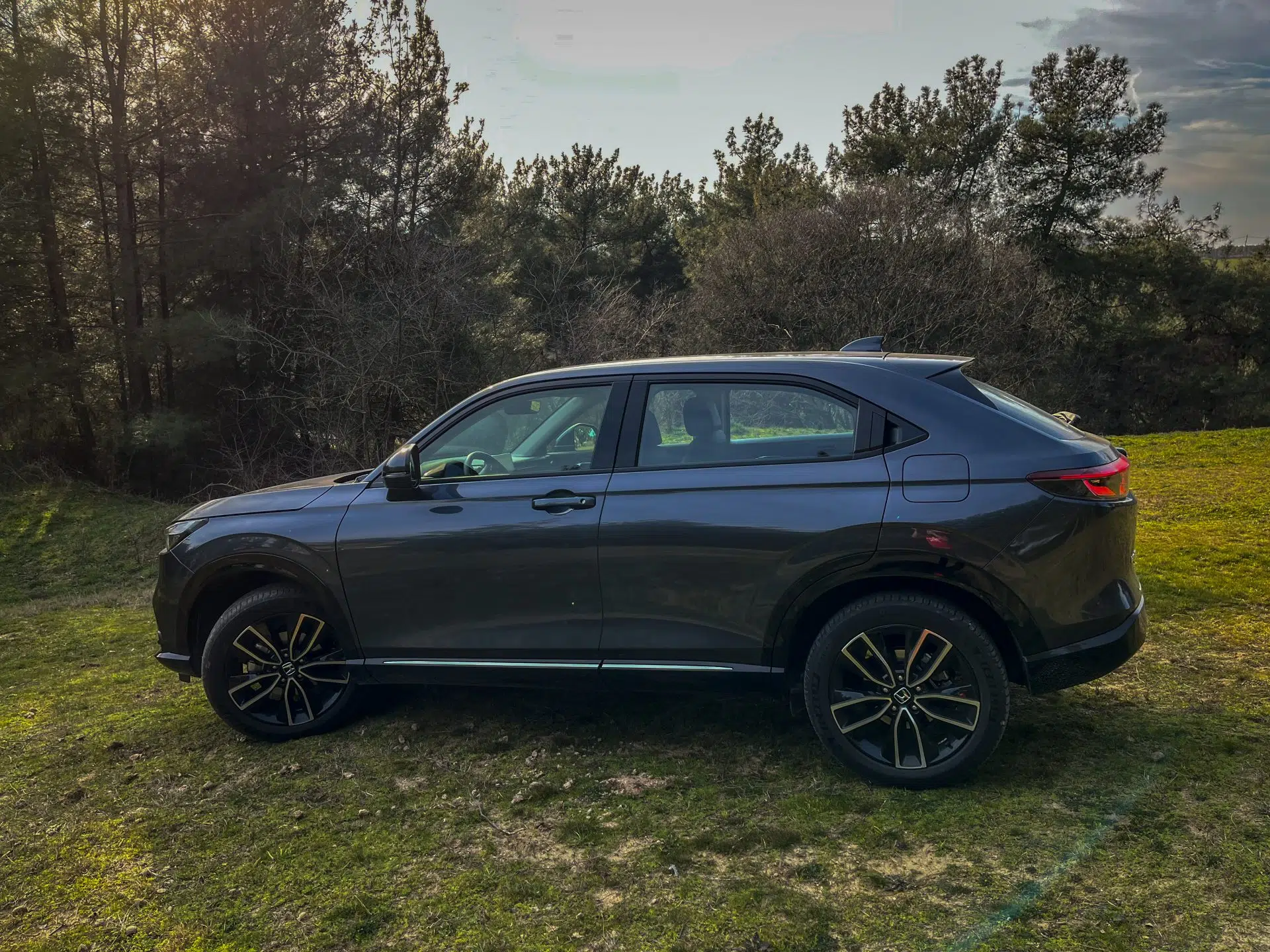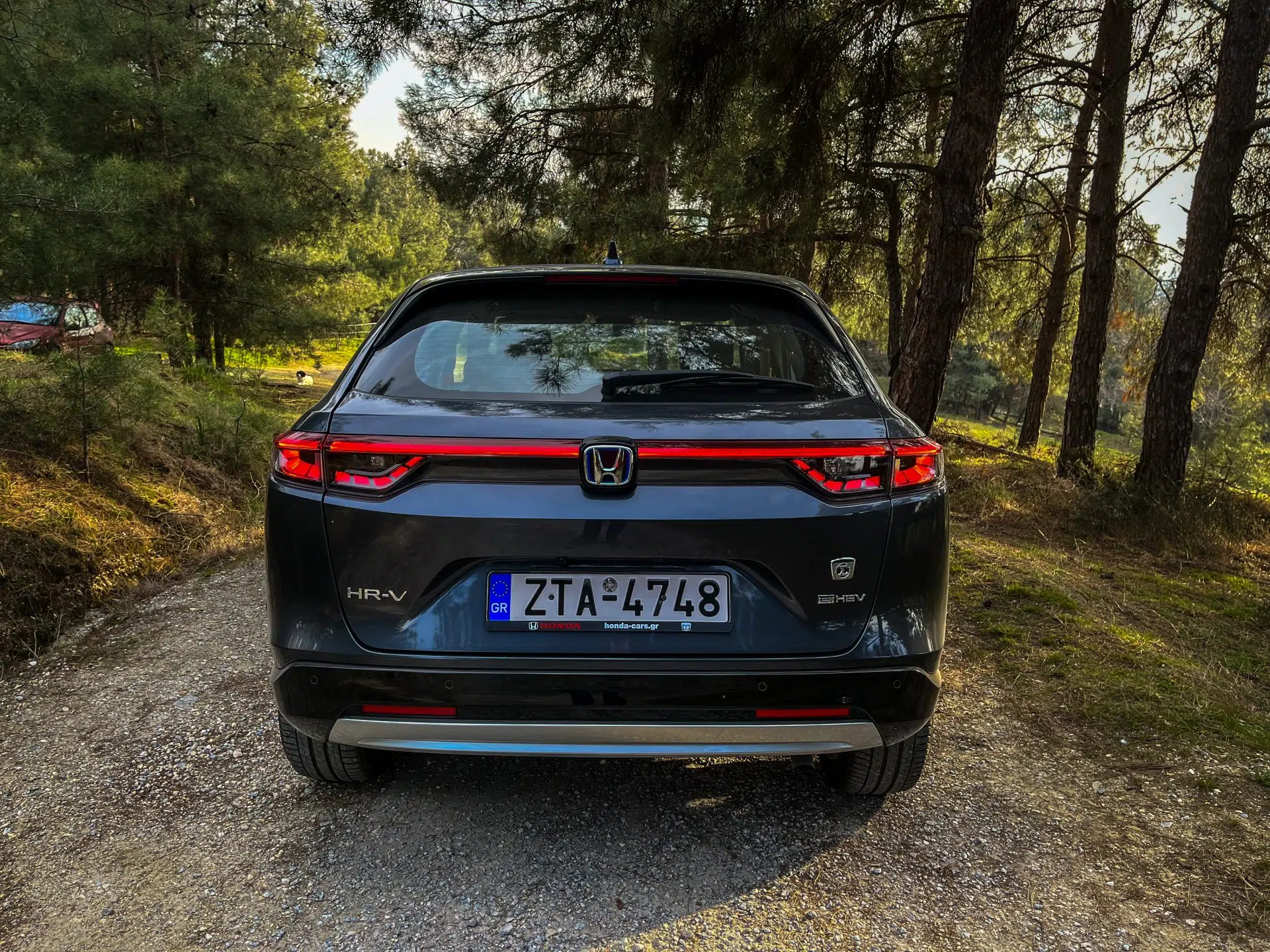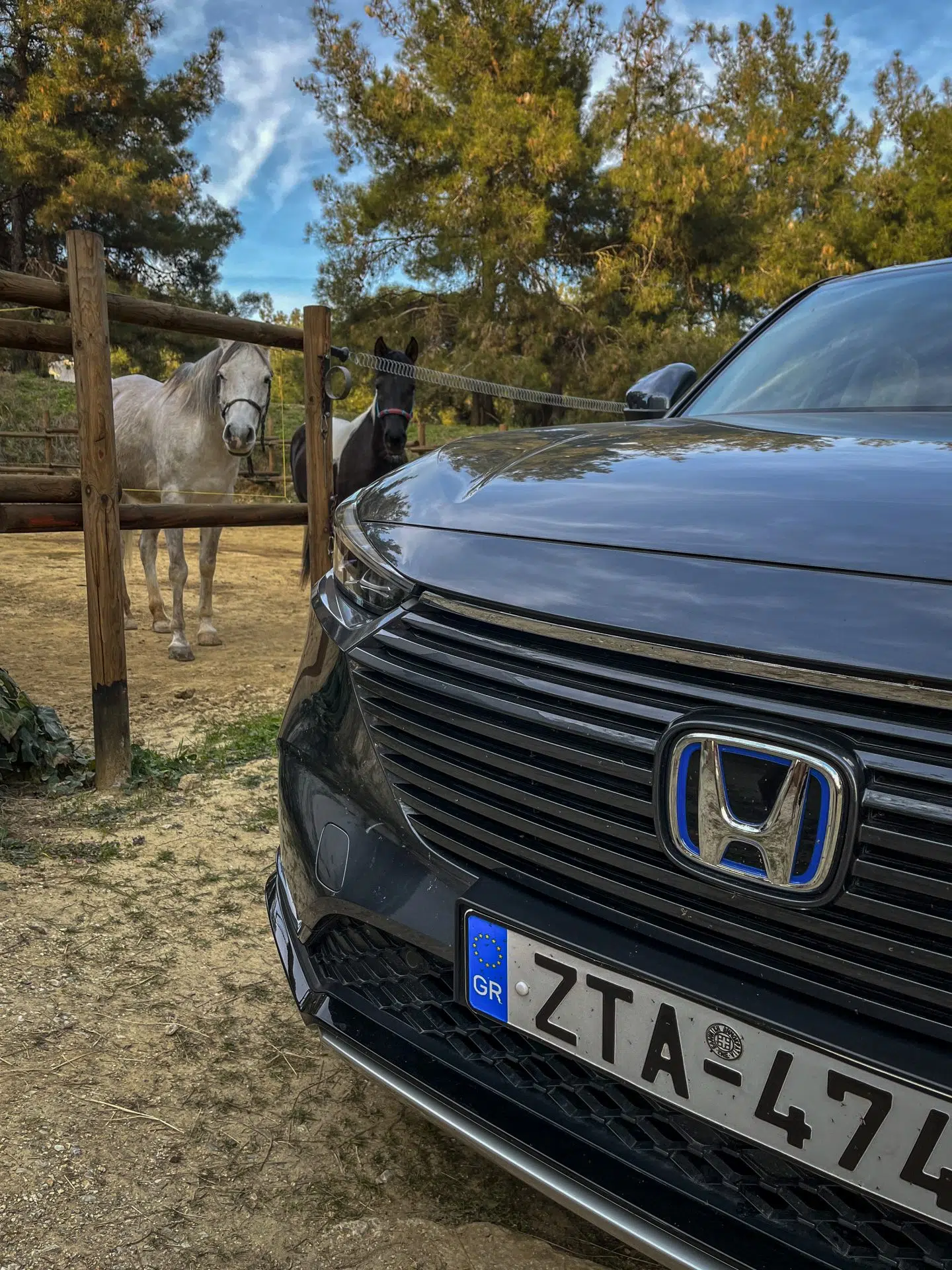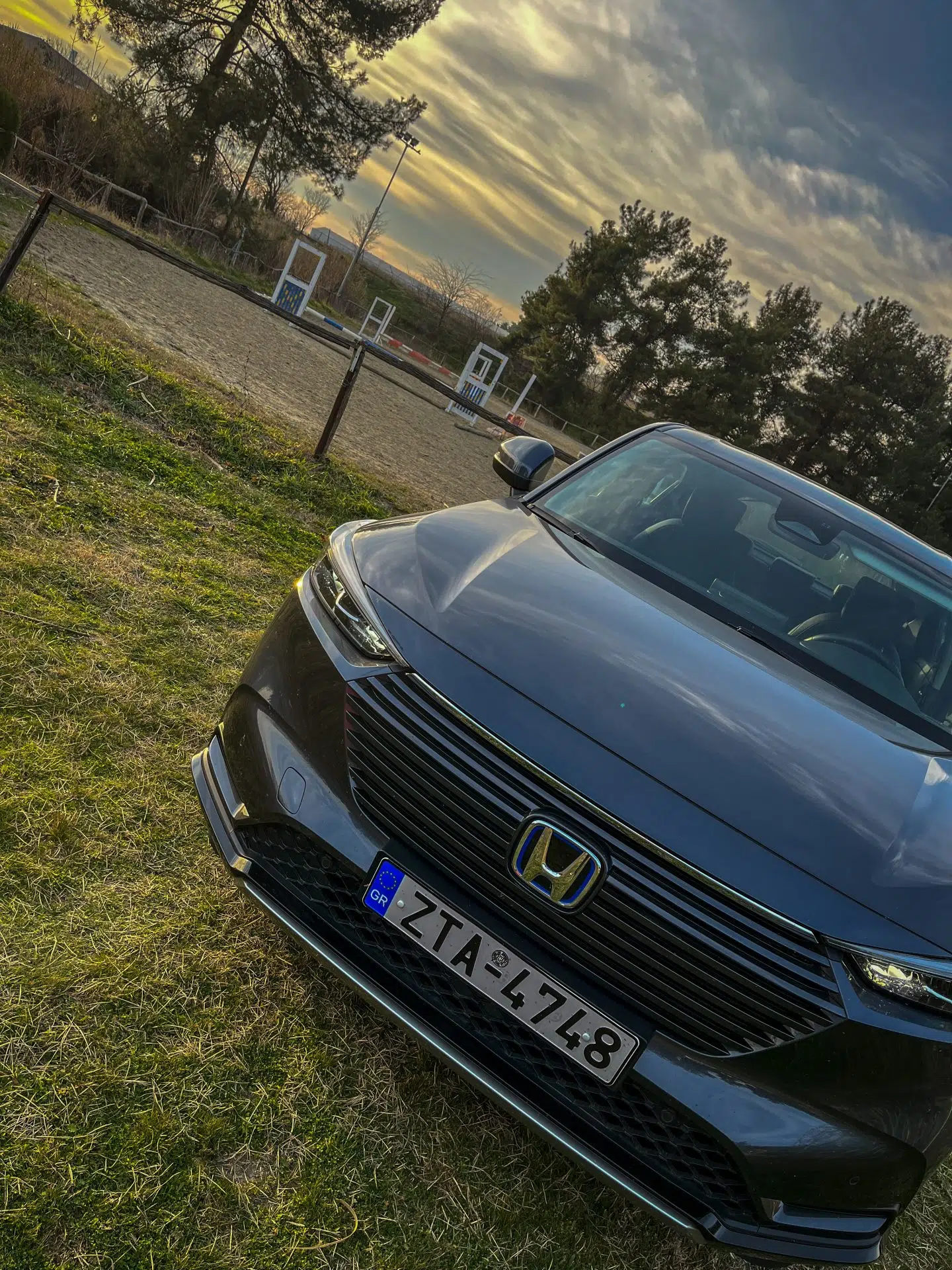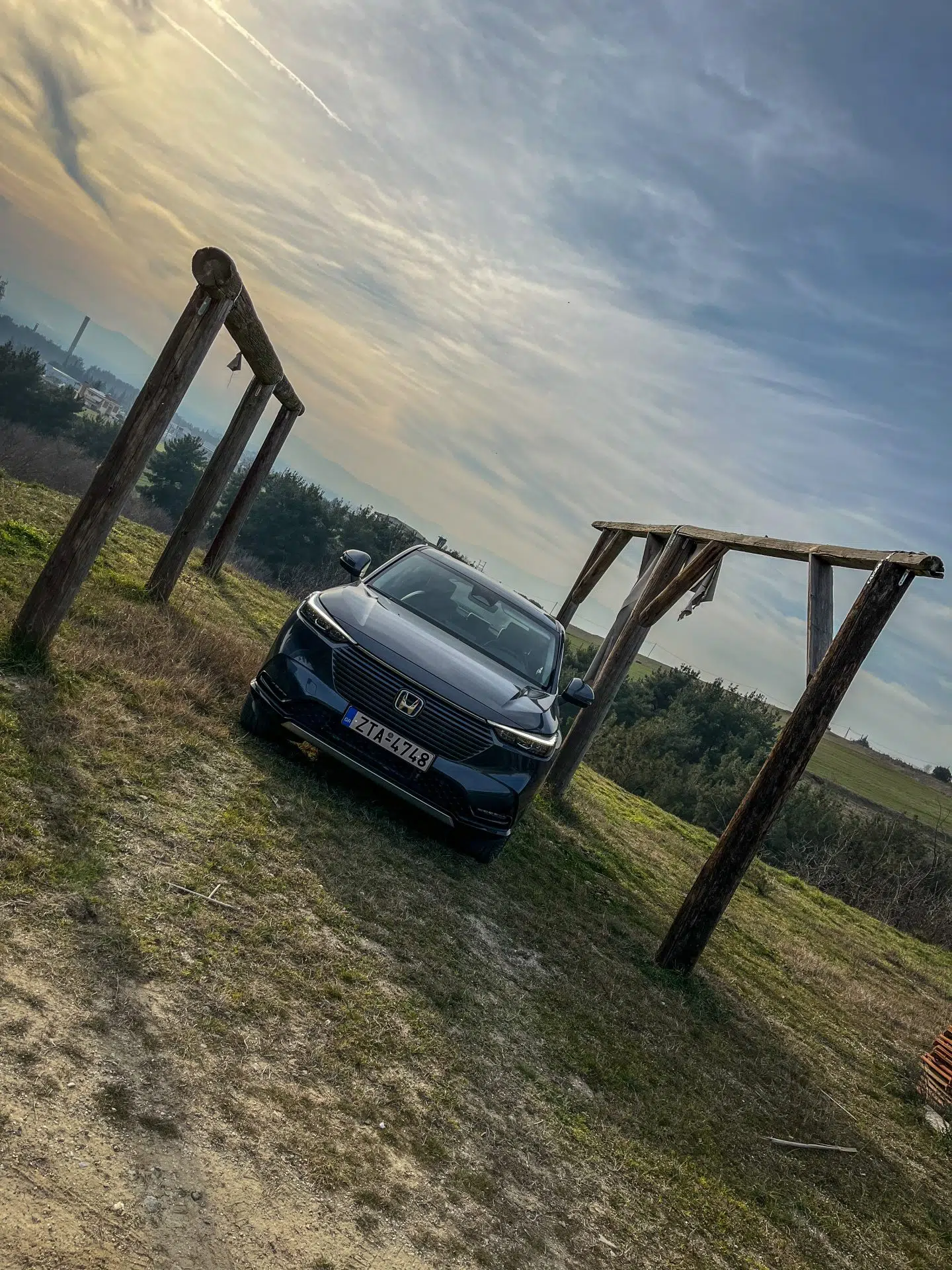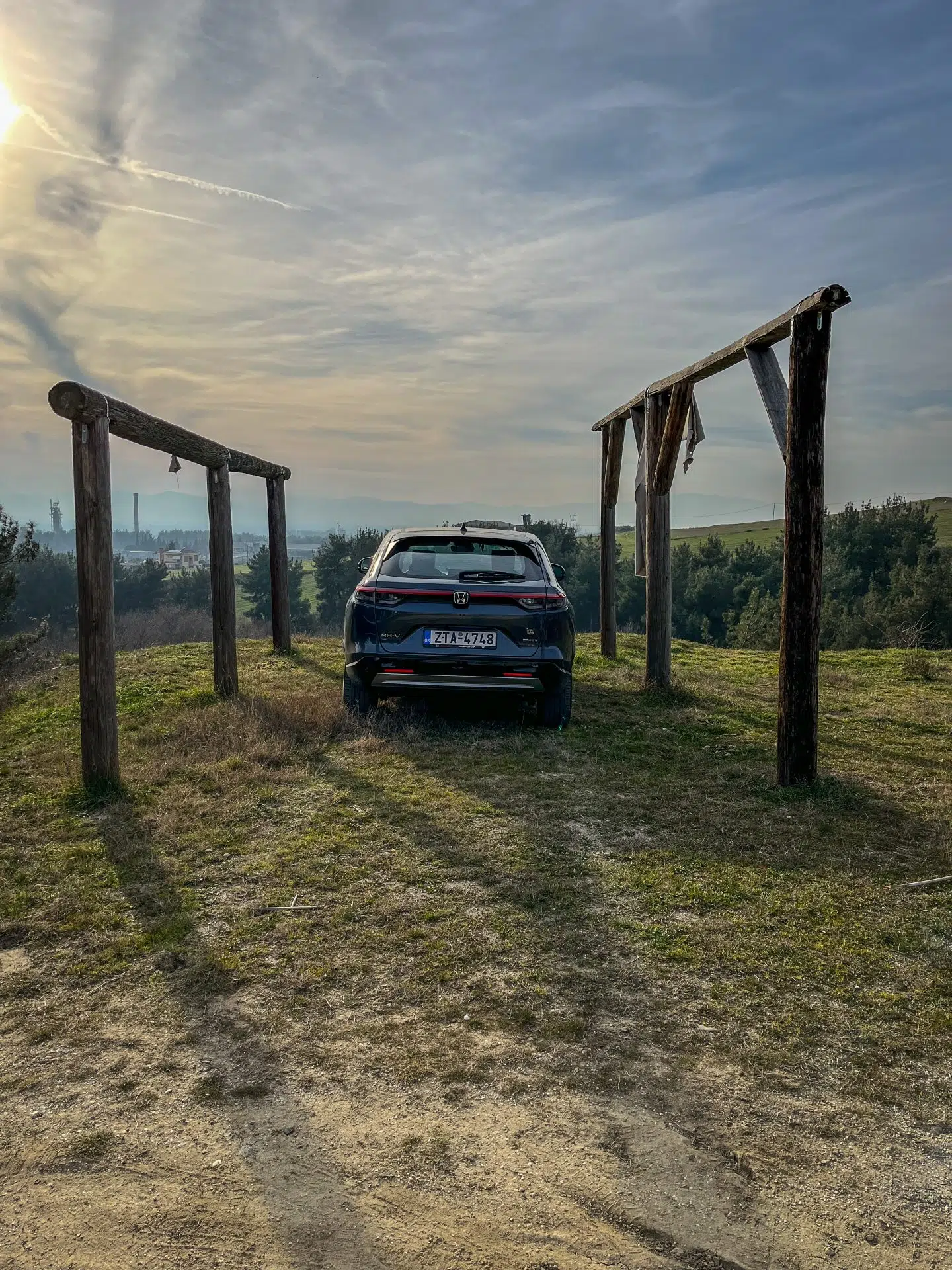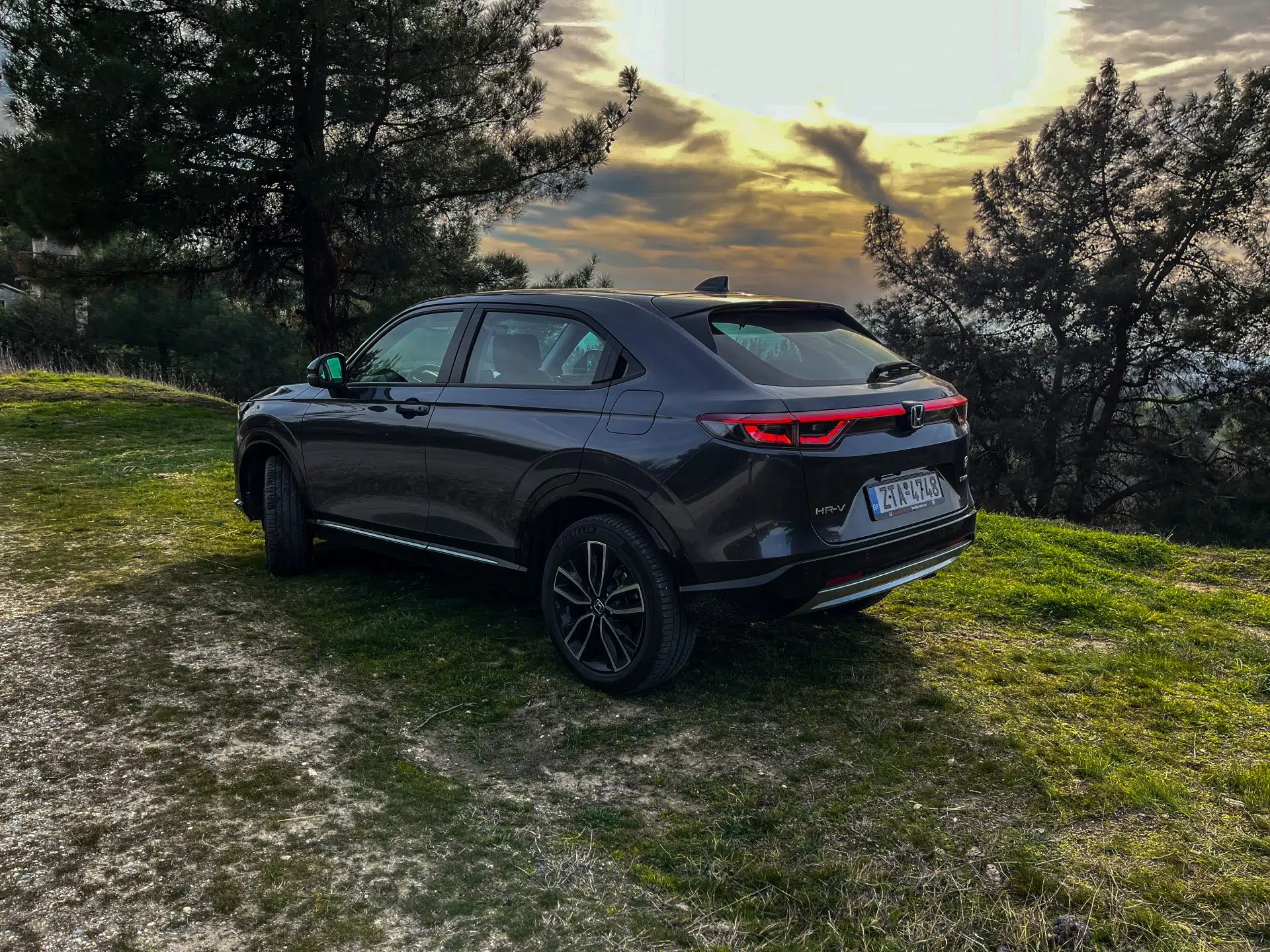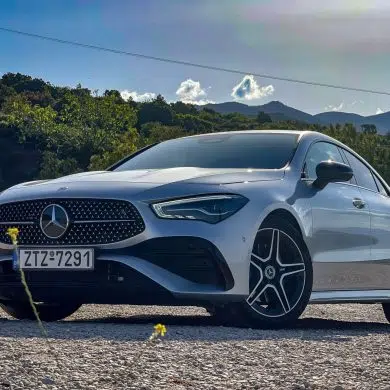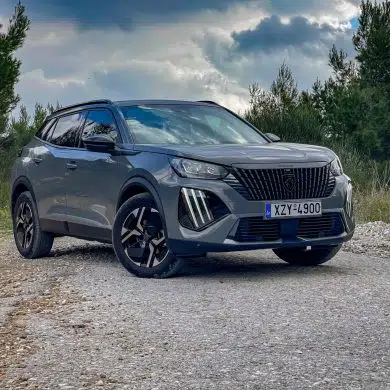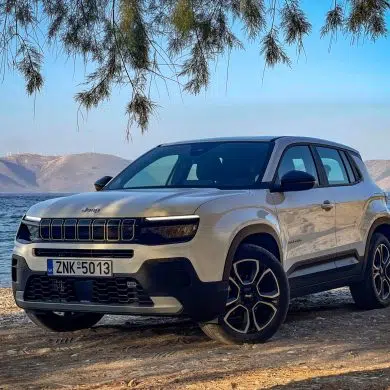SUVs are well and truly on the list of potential buyers. People prefer them for their looks, space and the feel of sitting higher. Honda, with the HR-V, brings its own proposition to this SUV category, with its own, different approach. After dabbling with the HR-V for a few days, we wanted to see how the Japanese manufacturer approaches this category and how it positions itself against the admittedly fierce European competition.
SUV, but with Coupe lines
If there's one thing you think of when you see the HR-V, it's "nice car". The marked differentiation from the previous generation is evident everywhere. The front end brings a new design trend from Honda, where the car looks more muscular and striking than its predecessor and the majority of the competition, giving it a point on the "impressiveness" factor.
Although muscular, the HR-V seems to be harmoniously aerodynamic nonetheless as we move from the front to the side and then to the rear. And now we come to its next key design point, the rear end. I think the coupe design is the cherry on top of its design language, as it gives it a striking finish, with its light clusters and sportier design, differentiating it from the classic, sharp finish of most SUVs in its class.
A spacious passenger cabin of high quality and ergonomics
While the exterior design of a car may play a key role, it's the interior that really matters, because that's where we enjoy the driving or co-driving experience of each car. And here too, the HR-V, more than meets every requirement and need.
In an era where hard plastic and screens rule, Honda is doing things a little differently. Opening the door of the HR-V and sitting in it, one immediately becomes aware of the leaps and bounds that the people at Honda have made compared to the models of the previous decade.
The driver's position and the steering column are adjustable in every possible way and I immediately found the position I wanted in order to sit comfortably and with the right distances for hands and feet. The HR-V's seats are comfortable and the materials you touch have a quality feel to them. Closing both the front and rear doors, the sound confirms its solid assembly quality, being "full" and "heavy".
Starting from the most important seat, the driver's seat, we'll take a tour of the passenger cabin. Being 1 and a Milko (by the metric system 1.70), I often have some difficulty in finding the perfect adjustment in seat, steering wheel and seatbelt. Not in the case of the HR-V. The adjustability of all 3 allowed me in just a few seconds to sit exactly how I wanted in just a few seconds. Starting with the most basic of all, the steering wheel has so many physical (very important for ergonomics) buttons on it to operate the active cruise control with lane keeping assist, the entertainment system and the voice command system. On our left, there's a physical lever for turn signals, lights and below them, the buttons to activate the heated windscreen, parking sensors, ESP and a few more functions. On the door, we have the controls for the mirrors, windows as well as a large side storage compartment, with an extra cup holder built into it. On the right, we have an armrest with a normal-sized storage compartment, two cup holders, two USB Type C slots, and an open-type stool for a mobile phone and some other small items. In the top version, it also provides wireless charging capability, however in the middle one we had on test, this wasn't on the equipment, not that we were bothered by that of course.
Sitting in the passenger seat, we have equally easy access to the entertainment system and a USB Type C charging port, while here too we have a large side storage compartment in the door, with an additional cup holder built into it. The glovebox on the passenger side is mainly for storing the car's manual and a few other papers, without being tiny but there's not too much extra space. It's as much as that. Now let's go and see how the rear passengers sit.
The rear doors, have the handshake-style handle, hidden behind the windows, as a continuation of the coupe design style of the rear end. With the driver's seat adjusted to my height, I can comfortably sit cross-legged in the back and still have plenty of room. To "toughen up" the HR-V, however, I asked a 6-foot-5 friend to adjust the driver's seat as he sits comfortably. Again, I was playing ball in the back. So I had him sit in the back. His headroom said it was ok, and he was still able to sit comfortably. So, even for a taller passenger, the back space is okay. On the ergonomic side, like in the front we have two USB Type C slots in the rear as well as storage space in the doors with a built-in cup holder. Now let's go and take a look at the HR-V's luggage space.
In the Advance version we had, the boot door opens electrically, with the key with the button on the door or with a swipe of the foot under the centre of the rear bumper. The door opens at what I think is the right speed, neither too slow nor too abrupt. On closing, it comes down at the same speed, except for the last few inches, which closes like a soft close, gently. The luggage space is okay. It's not the largest in the class, but it's not the smallest either, with a capacity of 335 litres. On the right and left there are recesses behind the canopies to put some extra stuff in, while the back half of the cover reveals an extra little hidden space to put some items you don't want to move back and forth in the trunk while driving. Plus, the 4 hooks where you can attach some things. Good Honda, practical.
Engines, battery and transmission
The HR-V is equipped with a self-charging mechanical set-up. Confused? Me too at first, but let's see how it works in practice. The HR-V's powertrain, called e:HEV, is a creation of the expertise Honda acquired from Formula 1. There's a 1.5-litre internal combustion engine with i-VTEC technology, two electric motors, a lithium-ion battery and a continuously variable transmission, eCVT. Well, that's about it, I think. Let's get to how it works.
When you start the HR-V, it decides for itself which mode it will choose to operate the mechanical set-up in at any given time. There's Electric Drive mode where the HR-V is driven purely electrically, there's Hybrid Drive mode where the internal combustion engine also operates, either partially assisting the drive or providing the charge for the battery, and finally, there's Engine Drive mode where the internal combustion engine participates in the car's movement to the fullest extent.
There are 3 driving modes, Economy, Normal and Sport. In Economy, the HR-V focuses on making the most of its electric mode and reacting a little more gently to the accelerator. In Normal, the throttle response becomes a little more responsive and the steering wheel has a slightly heavier feel. Finally, in Sport, it reacts to the most direct degree to each press of the accelerator while the steering wheel gives a slightly heavier feel again.
It's worth noting that for the majority of the drive, I used Economy mode because we wanted to see how economical the HR-V can really be, but I can also say that regardless of the driving profile, if you press the accelerator pedal harder, the HR-V immediately gives its maximum electric power and torque, while the internal combustion engine immediately kicks in to assist.
The driving impressions of the HR-V
The HR-V I can say surprised me, pleasantly. Being an SUV, I was thinking about how it would behave driving-wise, how it would be in terms of noise on highway travel, and how it would move when we took a drive on a route we have with various grades, elevation changes, and curves, from open to steep.
In everyday city driving, thanks to the electric motor, it moves very smoothly and linearly. Its throttle response is gradual and not nervous as in most electric motor sets. Its suspension absorbs well any vibrations and road surface irregularities, making the feeling in the passenger cabin pleasant.
On the motorway, it moves just as nicely and quietly, with the sound reaching the cabin being minimal, both in terms of road noise and any noise from the air, as it is a relatively bulky vehicle.
Now let's move on to the more dynamic driving part. I'll divide it into two subcategories, judging it as both an average prospective buyer and a fan of enjoyable driving. As an average prospective buyer, I find that for its weight and power it moves decently for its volume, is predictable and gives a sense of confidence. As a petrolhead, I will say it's good for being an SUV. It gives confidence, turns well and informs you of the pace at which you need to move. It doesn't get lean like other SUV's do. It handles well for an SUV. After all, it doesn't have any sport orientation. It is a comfortable and economical car. That's why it does well, driven by what it wants to be.
Now, as far as its eCVT transmission is concerned. For a CVT, it's better than average, for sure. Generally, I'm not a fan of this type of transmission, but I'm sure Honda chose it for the HR-V as well as their other models because it better serves the goals of the hybrid mechanical set-up.
Technologically advanced, ergonomically functional
If one thing is immediately apparent in the HR-V, as in the rest of Honda's models, it's the rapid improvement in technology, commensurate with the improved feel of their interiors, a far cry from what we've seen in previous generations of its models.
In the HR-V, the most impressive is the most useful system for anyone driving either on the highway or in traffic. It is the active cruise control with steering wheel assist function. The HR-V easily recognizes any striping that has been done on roads for years and is moderately visible. Its steering wheel assist is linear and "natural", as if assisted by a good driver. The active cruise control also has a linear behaviour both when slowing down or accelerating according to the pace of the vehicle ahead, and when starting from a low speed or stop (e.g. after a toll station), accelerating smoothly but not too slowly.
Its entertainment system is discreet and easy to use, even for a first-time user. All icons and individual menus are distinct and functional, making it very easy to find what you're looking for immediately.
In terms of ergonomics, I'll start with the one I liked the most. The buttons. Buttons for any function you want to use directly. Lights, turn signals, parking sensors, heated seats, air conditioning. All there, ready to be found immediately, and not buried in 50 sub-menus that you can't even find by voice typing. Well done to Honda, well done indeed. Aside from clean design, they got the ergonomics right and the balance between a multitude of physical buttons and functions controlled from the screen.
Let's go a little bit into the numbers
Let's start with the HR-V's mechanicals. Its 1.5-litre atmospheric i-VTEC engine has a 13.5:1 compression ratio, producing 107bhp and 131Nm of torque. The electric motor delivers 131 hp and 253 Nm of torque, with a top speed of 170 km/h, according to the manufacturer.
The total consumption measured in our test, amounted to an average of 6.6 litres/100 km, while in traffic in the centre of Thessaloniki and then in a steady drive on the motorway with cruise control at 120 km/h, we measured 6.4 litres/100 km. I think that given the 1400 kg weight, these are good numbers.
At 140 km/h, we measured 6.4 litres/100 km, which dropped back down to around 6.5 once we started driving again in an urban environment where the maximum possible use of the electric motor was again being made.
All in all
After a few days with the HR-V I can say that I was satisfied with what it offers compared to what it asks for. The price of the base Elegance version is (at this point in time) €34,100, the Advance version we had on hand is €37,100, while the top-of-the-line Advance Style is €40,200.
Sure, the money is enough. However, if we look at its competition, if we want to have a similar quality and assembly competitor from the European market, we'll start at about the same money and get closer to 50,000 than 40,000 when you put all the same extras in.
If we move towards the more affordable competition from the European market, we will find ourselves at slightly lower or similar price levels, if the corresponding equipment options are of course available. However, there we are moving towards competitors that have neither a similar level of quality materials, nor clearly the same reliability and build quality that Honda offers.
Can we talk about a value for money option then? I think so. If you listen to the price itself, it says, "pfff enough money", even by today's standards and price levels after the increases that have been seen in every product on the market, from the simplest to the most complex. On the other hand, you look at the competition and say that for what the HR-V offers, they are asking for something reasonable. It's not cheap, but it's not expensive. It is, and here, so-so.
It's a Honda. If you take care of it and take care of it, it will take care of you and it will take care of you. That's the feeling I got from returning the HR-V to the people at Honda. You can count on it and it will always get you where you want to go, safely, comfortably and confidently.


